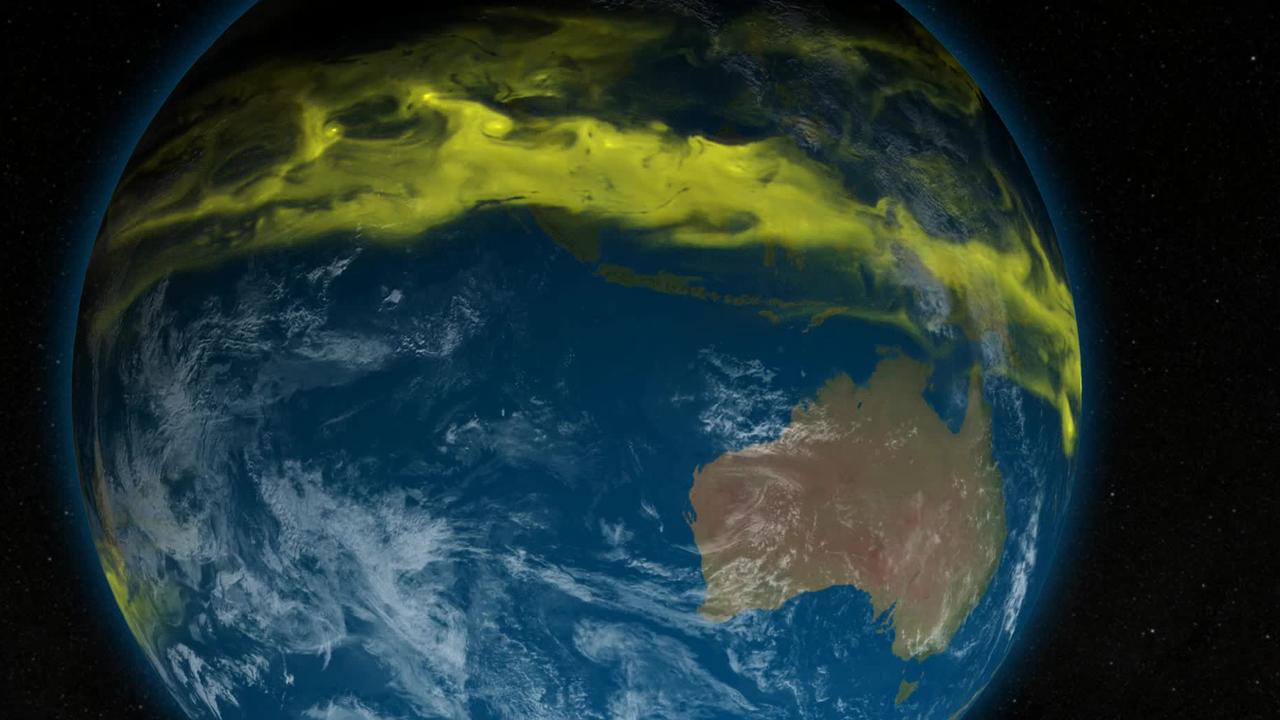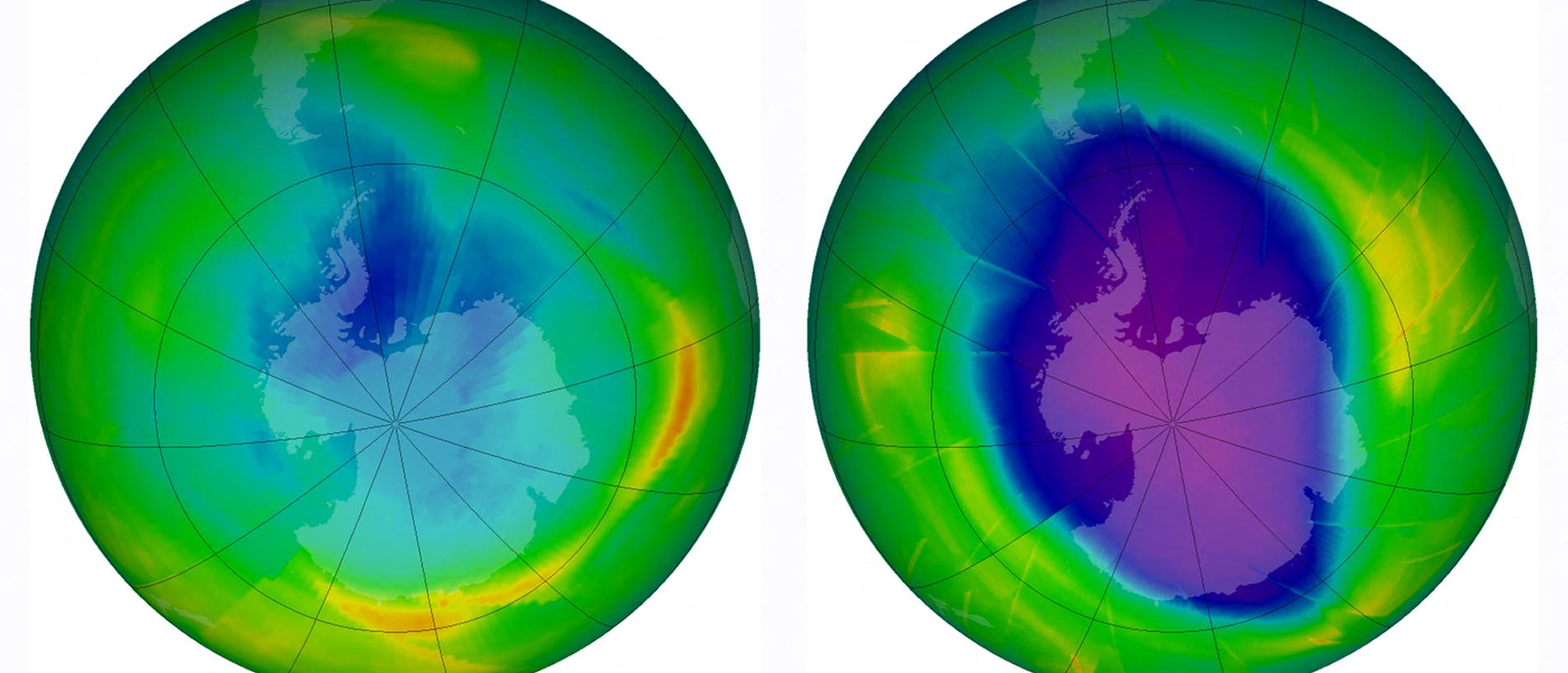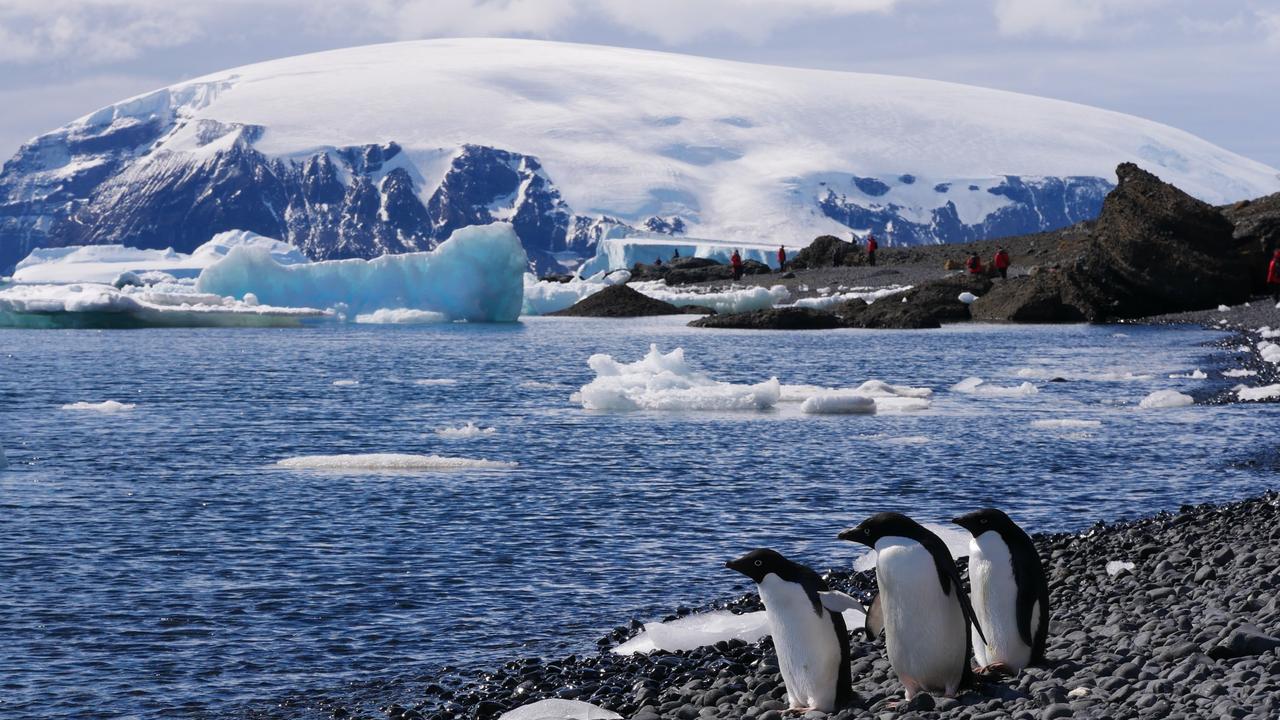Ozone hole is slowly healing after global chemical ban
A global ban on chemicals that were munching a hole in Earth’s protective ozone layer is paying off, with a United Nations report saying it will be fully mended in 43 years

READING LEVEL: ORANGE
Earth’s protective ozone layer* is slowly but noticeably healing at a pace that will fully mend the hole over Antarctica in about 43 years, a new United Nations report says.
The report found the ozone layer is in the process of recovering, more than 35 years after every nation in the world agreed to stop producing ozone-depleting* chemicals that were being used in everyday products like aerosols, packaging and refrigerators.
The ozone layer, a blanket of gas that exists between 10km and 50km above Earth’s surface, shields the planet from the sun’s powerful ultraviolet radiation which is linked to skin cancer, cataracts and crop damage.
“In the upper stratosphere* and in the ozone hole we see things getting better,” said Paul Newman, co-chair of the UN team that examines the health of the ozone layer every four years.

The progress is slow, according to the report, presented at the American Meteorological Society convention on January 9.
The global average amount of ozone 30km high in the atmosphere won’t be back to 1980 pre-thinning levels until about 2040, the report said. And it won’t be back to normal in the Arctic until 2045.
In Antarctica, where the ozone is so thin there’s an annual giant gaping hole, it won’t be fully fixed until 2066, the report said.

The global effort to heal the ozone hole came out of a 1987 agreement called the Montreal Protocol that banned a class of chemicals often used in refrigerants and aerosols.
Scientists and environmental advocates* across the world have long hailed* the Montreal Protocol as one of the biggest ecological* victories for humanity.
The secretary-general of the World Meteorological Organisation, Professor Petteri Taalas, said the healing of the ozone layer showed what could be achieved when the world worked together for the good of the planet.
“Ozone action sets a precedent* for climate action,” Professor Taalas said.
“Our success in phasing out ozone-eating chemicals shows us what can and must be done – as a matter of urgency – to transition away from fossil fuels, reduce greenhouse gases and so limit temperature increase.”

There were signs of healing in the last report on the ozone layer four years ago but the improvements were only slight.
“Those numbers of recovery have solidified* a lot,” Mr Newman said.
Mr Newman, chief earth scientist at NASA’s Goddard Space Flight Center, said the two main chemicals that munch away at the ozone layer – chlorine and bromine – were now in lower levels in the atmosphere.
Chlorine levels were down 11.5 per cent since peaking in 1993 and bromine, which is more damaging to the ozone layer but is at lower levels in the air, dropped 14.5 per cent since its 1999 peak.
Mr Newman said the fact chlorine and bromine levels had stopped growing and were now coming down was “a real testament* to the effectiveness of the Montreal Protocol”.
Natural weather patterns in the Antarctic also affect the size of the ozone hole, which peaks in autumn. Weather patterns have caused the hole to be a bit bigger over the past couple of years, but Mr Newman said overall the trend was one of healing.
UN environment program director Inger Andersen has previously said the healing of the ozone hole was “saving two million people every year from skin cancer”.
GLOSSARY
- ozone layer: a thin part of Earth’s atmosphere that absorbs almost all of the sun’s harmful ultraviolet light
- depleting: to reduce something in size or amount
- stratosphere: the layer of Earth’s atmosphere lying above the weather of the lower atmosphere
- advocates: people who publicly support and recommend a particular cause
- hailed: to publicly praise or show approval for something
- ecological: to do with the relationship between living things and their environment
- precedent: an act or decision that serves as a guide for future situations with similar circumstances
- solidified: become solid
- testament: proof or evidence that something exists or is true
EXTRA READING
Australia warmer than 100 years ago
Waste pyramid zeros in on plastics problem
Greenland ‘zombie ice’ on the rise
Chill seeker shares amazing Antarctic adventures
QUICK QUIZ
- How many years will it take for the hole over Antarctica to be fully mended?
- What does the ozone layer shield Earth from?
- Name one of the everyday products the ozone-depleting chemicals were used in.
- What is the name of the agreement that saw all countries agree to ban the ozone-depleting chemicals?
- Which year was this agreement made?
LISTEN TO THIS STORY
CLASSROOM ACTIVITIES
More dos, less don’ts
We often hear about all the things going wrong with the environment and all the things we do wrong. It’s nice to hear some positive news and that some things are being done right. Therefore instead of telling people what not to do, and what they’re doing wrong, maybe we should turn it around and tell them all the things we are doing right.
That might encourage even more people to help the ozone layer heal.
Work with a partner to come up with at least three to five positive things that people and businesses are doing to help the environment and the ozone layer heal.
1.
2.
3.
4.
5.
Time: allow 20 minutes to complete this activity
Curriculum Links: English, Science, Personal and social, Critical and creative thinking
2. Extension
How else could the world work together for the good of the planet?
Work with a partner and think of some other pacts different countries could make together to help the environment.
Time: allow 10 minutes to complete this activity
Curriculum Links: English, Science, Critical and creative thinking
VCOP ACTIVITY
Save our planet
Well the results are in! We are on the right track to fix the issues with the ozone layer, even if it’s still a while off. What else can we do to fix the planet?
Think of three small things you or your family can do to help save the planet from all our mess. Remember if we all do a few small things, it will add up to meaning a lot to the planet.
Make a list of three things. Then pick the easiest task you can achieve and write a pitch to convince your family to join your campaign.
Don’t forget to use your VCOP skills to engage and connect with the audience.
Re-read your work to ensure it is clear and makes sense.

